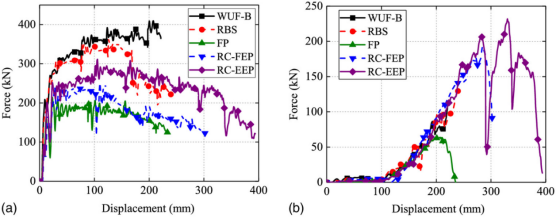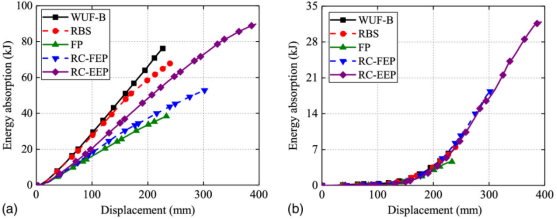[Structural Engineering]
Wang Hao, Tan Kang Hai and Yang Bo*. Experimental Tests of Steel Frames with Different Beam–Column Connections under Falling Debris Impact [J]. J Struct Eng, 2020, 146(1):04019183.
Keywords: Debris impact; Progressive collapse;Disproportionate collapse;Steel frames;Beam-column connections;Impact resistance; Energy absorption
Abstract:
Falling debris may initiate or promote the progressive collapse of a structure. To mitigate progressive collapse under falling debris impact,steel frames with five types of beam-column connections were tested. Both single and multiple impacts were applied to each specimen to obtain dynamic responses,load-resisting mechanisms,and impact resistance. The results showed that a typical impact process was divided into three stages. The falling debris impact was mainly resisted by the inertia effect in the initial stage and by deformation in subsequent stages. The majority of the external work applied to the system was absorbed by bending deformation,especially by the plastic rotation at midspan of the beam. All the specimens had the same global deformation shape under the midspan impact scenario. The evolution of catenary action in specimens with different beam column connections was similar. Catenary action was shown to significantly improve the load-carrying capacity and energy absorption in specimens with high levels of rotational ductility. Greater load-carrying capacity did not offer greater impact resistance. Load-carrying capacity and ductility both played a significant role in the energy absorption capability of the specimens.
Resource:https://ascelibrary.org/doi/10.1061/%28ASCE%29ST.1943-541X.0002469





